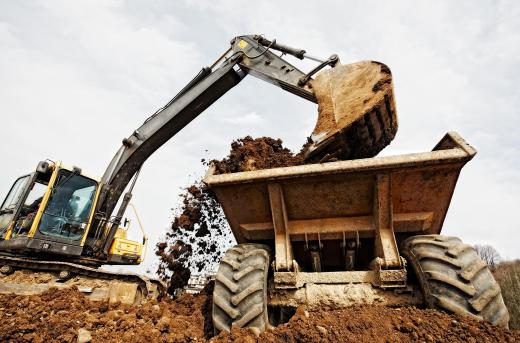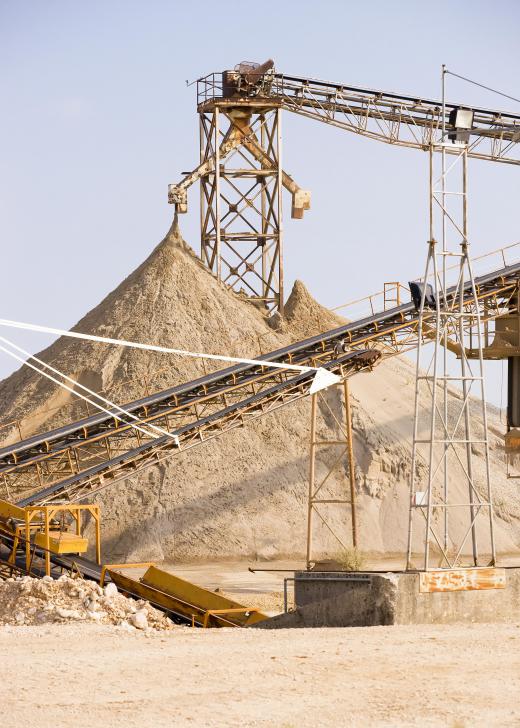On most construction sites, materials such as gravel, sand and fill dirt must be brought in, while waste materials such as old bricks and excavated dirt must be carried out. The bulk of this work is performed with specialized vehicles called dump trucks. Dump trucks can be as small as a standard passenger truck or as large as an 18-wheeler. They are distinguished by a sturdy rear-mounted truck bed with an open gate on one end and a hydraulic lift on the other.
Dump trucks are commonly used to transport loose materials which could not be supported on an open-bed truck. The quarry or other supplier may use front end loaders or an overhead hopper to fill the trucks to capacity, then some form of protective cover may be used to keep debris from falling out during transport. Once the trucks reach their destination, the back gate is released and a hydraulic lift raises the front of the bed. The material is usually left in piles near the construction area.

Some dump trucks use a different type of bed to deposit materials in rows. The rear assembly looks like a metal hopper with several funnels leading to the ground. Instead of lifting the attached hopper, these trucks drive down rows as the material pours out of the bottom. This can be a useful feature whenever small amounts of material are needed over a large area, such as on a roadway under construction.

Dump trucks may have a rigid assembly, with the bed and cabin forming one vehicle, or they may be articulated, so that the bed may be removed from the main cab. Some dump trucks also tow a smaller trailer, commonly called a pup, for the purpose of offloading the material in stages. The pup is filled to capacity and taken to the construction site by a different towing system. Once the contents have been emptied, the pup returns for a refill. This keeps the trucks from having to travel too far into a construction zone.

